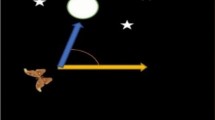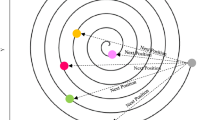Abstract
This paper presents two levels of enhancing the basic Moth flame optimization (MFO) algorithm. The first step is hybridizing MFO and the local-based algorithm, hill climbing (HC), called MFOHC. The proposed algorithm takes the advantages of HC to speed up the searching, as well as enhancing the learning technique for finding the generation of candidate solutions of basic MFO. The second step is the addition of six popular selection schemes to improve the quality of the selected solution by giving a chance to solve with high fitness value to be chosen and increase the diversity. In both steps of enhancing, thirty benchmark functions and five IEEE CEC 2011 real-world problems are used to evaluate the performance of the proposed versions. In addition, well-known and recent meta-heuristic algorithms are applied to compare with the proposed versions. The experiment results illustrate that the proportional selection scheme with MFOHC, namely (PMFOHC) is outperforming the other proposed versions and algorithms in the literature.





Similar content being viewed by others
Notes
The set of benchmark functions in our work is not matched totally with the other sets in the literature. Thus, we selected a group of benchmark function which matched with our work
References
Abdelmadjid C, Mohamed SA, Boussad B (2013) Cfd analysis of the volute geometry effect on the turbulent air flow through the turbocharger compressor. Energy Proced 36:746–755
Abualigah LM, Khader AT, Hanandeh ES (2018) A hybrid strategy for krill herd algorithm with harmony search algorithm to improve the data clustering1. Intell Decis Technol 12(1):3–14
Allam D, Yousri D, Eteiba M (2016) Parameters extraction of the three diode model for the multi-crystalline solar cell/module using moth-flame optimization algorithm. Energy Convers Manag 123:535–548
Amini S, Homayouni S, Safari A, Darvishsefat AA (2018) Object-based classification of hyperspectral data using random forest algorithm. Geo-spat Inf Sci 21(2):127–138
Bäck T (1995) Generalized convergence models for tournament-and (\(\mu\), lambda)-selection
Bhesdadiya R, Trivedi IN, Jangir P, Kumar A, Jangir N, Totlani R (2017) A novel hybrid approach particle swarm optimizer with moth-flame optimizer algorithm. Advances in computer and computational sciences. Springer, Berlin, pp 569–577
Blickle T, Thiele L (1995) A mathematical analysis of tournament selection. ICGA Citeseer 95:9–15
Blum C, Li X (2008) Swarm intelligence in optimization. Swarm intelligence. Springer, Berlin, pp 43–85
Das S, Suganthan PN (2010) Problem definitions and evaluation criteria for CEC 2011 competition on testing evolutionary algorithms on real world optimization problems. Jadavpur University, Nanyang Technological University, Kolkata, pp 341–359
El Aziz MA, Ewees AA, Hassanien AE (2017) Whale optimization algorithm and moth-flame optimization for multilevel thresholding image segmentation. Expert Syst Appl 83:242–256
Elaziz MA, Ewees AA, Ibrahim RA, Lu S (2020) Opposition-based moth-flame optimization improved by differential evolution for feature selection. Math Comput Simul 168:48–75
Elsakaan AA, El-Sehiemy RA, Kaddah SS, Elsaid MI (2018) An enhanced moth-flame optimizer for solving non-smooth economic dispatch problems with emissions. Energy 157:1063–1078
Gandomi AH, Alavi AH (2012) Krill herd: a new bio-inspired optimization algorithm. Commun Nonlinear Sci Numer Simul 17(12):4831–4845
Gaston KJ, Bennie J, Davies TW, Hopkins J (2013) The ecological impacts of nighttime light pollution: a mechanistic appraisal. Biol Rev 88(4):912–927
Geem ZW, Kim JH, Loganathan GV (2001) A new heuristic optimization algorithm: harmony search. Simulation 76(2):60–68
Glover F (1977) Heuristics for integer programming using surrogate constraints. Decis Sci 8(1):156–166
Goldberg DE, Holland JH (1988) Genetic algorithms and machine learning. Mach Learn 3(2):95–99
Hancock PJ (1994) An empirical comparison of selection methods in evolutionary algorithms. AISB workshop on evolutionary computing. Springer, Berlin, pp 80–94
Hazir E, Erdinler ES, Koc KH (2018) Optimization of cnc cutting parameters using design of experiment (DOE) and desirability function. J Forest Res 29(5):1423–1434
Holland JH et al (1992) Adaptation in natural and artificial systems: an introductory analysis with applications to biology, control, and artificial intelligence. MIT press, London
Jangir N, Pandya MH, Trivedi IN, Bhesdadiya R, Jangir P, Kumar A (2016) Moth-flame optimization algorithm for solving real challenging constrained engineering optimization problems. In: 2016 IEEE students’ conference on electrical, electronics and computer science (SCEECS), IEEE, pp 1–5
Karaboga D, Basturk B (2007) Artificial bee colony (ABC) optimization algorithm for solving constrained optimization problems. International fuzzy systems association world congress. Springer, Berlin, pp 789–798
Kennedy J (2010) Particle swarm optimization. Encyclop Mach Learn 12:760–766
Kennedy J, Eberhart R (1995) Particle swarm optimization. In: Proceedings of ICNN’95-international conference on neural networks, IEEE, vol 4, pp 1942–1948
Kirkpatrick S, Gelatt CD, Vecchi MP (1983) Optimization by simulated annealing. Science 220(4598):671–680
Koziel S, Yang XS (2011) Computational optimization, methods and algorithms, vol 356. Springer, Berlin
Li WK, Wang WL, Li L (2018) Optimization of water resources utilization by multi-objective moth-flame algorithm. Water Resour Manag 32:3303–3316
Mirjalili S (2015) Moth-flame optimization algorithm: a novel nature-inspired heuristic paradigm. Knowl Based Syst 89:228–249
Mirjalili S (2016) Dragonfly algorithm: a new meta-heuristic optimization technique for solving single-objective, discrete, and multi-objective problems. Neural Comput Appl 27(4):1053–1073
Mirjalili S, Mirjalili SM, Lewis A (2014) Grey wolf optimizer. Adv Eng Softw 69:46–61
Mirjalili S, Gandomi AH, Mirjalili SZ, Saremi S, Faris H, Mirjalili SM (2017) Salp swarm algorithm: a bio-inspired optimizer for engineering design problems. Adv Eng Softw 114:163–191
Mitchell M (1998) An introduction to genetic algorithms. MIT press, London
Oladele R, Sadiku J (2013) Genetic algorithm performance with different selection methods in solving multi-objective network design problem. Int J Comput Appl 70:12
Razali NM, Geraghty J et al (2011) Genetic algorithm performance with different selection strategies in solving tsp. Proc World Congress Eng Int Assoc Eng Hong Kong 2:1–6
Reddy S, Panwar LK, Panigrahi BK, Kumar R (2018) Solution to unit commitment in power system operation planning using binary coded modified moth flame optimization algorithm (bmmfoa): a flame selection based computational technique. J Comput Sci 25:298–317
Sapre S, Mini S (2019) Opposition-based moth flame optimization with cauchy mutation and evolutionary boundary constraint handling for global optimization. Soft Comput 23(15):6023–6041
Sarma A, Bhutani A, Goel L (2017) Hybridization of moth flame optimization and gravitational search algorithm and its application to detection of food quality. In: 2017 intelligent systems conference (IntelliSys), IEEE, pp 52–60
Savsani V, Tawhid MA (2017) Non-dominated sorting moth flame optimization (ns-mfo) for multi-objective problems. Eng Appl Artif Intell 63:20–32
Schlierkamp-Voosen D, Mühlenbein H (1993) Predictive models for the breeder genetic algorithm. Evol Comput 1(1):25–49
Sharma A (2014) Bioinformatic analysis revealing association of exosomal MRNAS and proteins in epigenetic inheritance. J Theor Biol 357:143–149
Shehab M (2020) Hybridization cuckoo search algorithm for extracting the ODF maxima. Artificial intelligence in diffusion MRI. Springer, Berlin, pp 111–146
Shehab M, Khader AT, Al-Betar M (2016) New selection schemes for particle swarm optimization. IEEJ Trans Electro Inf Syst 136(12):1706–1711
Shehab M, Khader AT, Al-Betar MA (2017) A survey on applications and variants of the cuckoo search algorithm. Appl Soft Comput 61:1041–1059
Shehab M, Khader AT, Al-Betar MA, Abualigah LM (2017) Hybridizing cuckoo search algorithm with hill climbing for numerical optimization problems. In: Information technology (ICIT), 2017 8th international conference on, IEEE, pp 36–43
Shehab M, Khader AT, Laouchedi M (2017) Modified cuckoo search algorithm for solving global optimization problems. International conference of reliable information and communication technology. Springer, Berlin, pp 561–570
Shehab M, Abualigah L, Al Hamad H, Alabool H, Alshinwan M, Khasawneh AM (2019) Moth-flame optimization algorithm: variants and applications. Neural Comput Appl 20:1–26
Shehab M, Khader AT, Alia MA (2019) Enhancing cuckoo search algorithm by using reinforcement learning for constrained engineering optimization problems. In: 2019 IEEE Jordan international joint conference on electrical engineering and information technology (JEEIT), IEEE, pp 812–816
Smith T, Villet M (2001) Parasitoids associated with the diamondback moth, Plutella xylostella (l.), in the eastern Cape, south Africa. In: The management of diamondback moth and other crucifer pests. Proceedings of the fourth international workshop, pp 249–253
Sodeifian G, Ardestani NS, Sajadian SA (2019) Extraction of seed oil from Diospyros lotus optimized using response surface methodology. J Forest Res 30(2):709–719
Tang Z, Gong M (2019) Adaptive multifactorial particle swarm optimisation. CAAI Trans Intell Technol 4(1):37–46
Trivedi I, Kumar A, Ranpariya AH, Jangir P (2016) Economic load dispatch problem with ramp rate limits and prohibited operating zones solve using levy flight moth-flame optimizer. In: 2016 international conference on energy efficient technologies for sustainability (ICEETS), IEEE, pp 442–447
Volkovs M, Chiang F, Szlichta J, Miller RJ (2014) Continuous data cleaning. In: 2014 IEEE 30th international conference on data engineering, IEEE, pp 244–255
Wang M, Chen H, Yang B, Zhao X, Hu L, Cai Z, Huang H, Tong C (2017) Toward an optimal kernel extreme learning machine using a chaotic moth-flame optimization strategy with applications in medical diagnoses. Neurocomputing 267:69–84
Xu Y, Chen H, Heidari AA, Luo J, Zhang Q, Zhao X, Li C (2019) An efficient chaotic mutative moth-flame-inspired optimizer for global optimization tasks. Expert Syst Appl 129:135–155
Xu Y, Chen H, Luo J, Zhang Q, Jiao S, Zhang X (2019) Enhanced moth-flame optimizer with mutation strategy for global optimization. Inf Sci 492:181–203
Yang XS (2010) A new metaheuristic bat-inspired algorithm. Nature inspired cooperative strategies for optimization (NICSO 2010). Springer, Berlin, pp 65–74
Yousri D, AbdelAty AM, Said LA, AboBakr A, Radwan AG (2017) Biological inspired optimization algorithms for cole-impedance parameters identification. AEU Int J Electron Commun 78:79–89
Zawbaa HM, Emary E, Parv B, Sharawi M (2016) Feature selection approach based on moth-flame optimization algorithm. In: 2016 IEEE congress on evolutionary computation (CEC), IEEE, pp 4612–4617
Author information
Authors and Affiliations
Corresponding author
Ethics declarations
Conflict of interest
The authors declare that they have no conflicts of interest.
Ethical approval
This article does not contain any studies with human participants or animals performed by any of the authors.
Additional information
Publisher's Note
Springer Nature remains neutral with regard to jurisdictional claims in published maps and institutional affiliations.
Rights and permissions
About this article
Cite this article
Shehab, M., Alshawabkah, H., Abualigah, L. et al. Enhanced a hybrid moth-flame optimization algorithm using new selection schemes. Engineering with Computers 37, 2931–2956 (2021). https://doi.org/10.1007/s00366-020-00971-7
Received:
Accepted:
Published:
Issue Date:
DOI: https://doi.org/10.1007/s00366-020-00971-7




